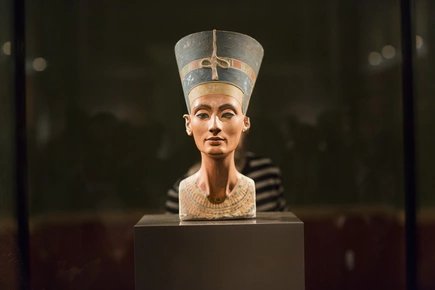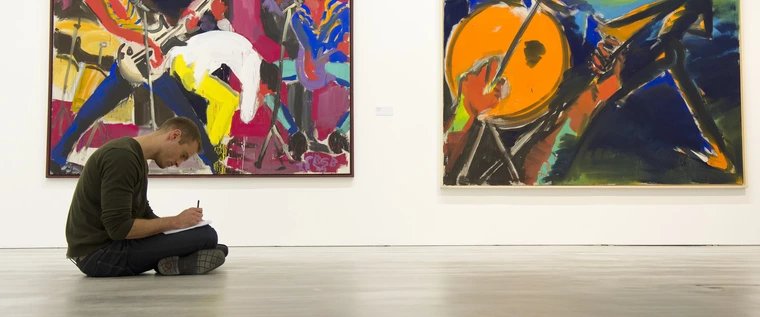
Fashion 3D - digitized, animated and interpreted
How does the virtual fit with fashion? Isn't the capture of material and movement, even the feel and sound of fabrics, necessary to grasp fashion in its entirety? In contrast, the virtual often seems mechanical, cold, and emotionless. So what is the special appeal of combining these two poles? These questions are at the heart of the exhibition, which approaches the topic from different perspectives.
The starting point is the research project "Virtual Couture. 3D Digital Reconstruction and Animation," which was carried out in 2024. Previously unseen models from the late 18th century, as well as fashion from the 1920s by fashion icons Gabrielle Chanel and Jeanne Lanvin, as well as a haute couture model by Madame Grès from the 1970s, were selected from the collection with the aim of being able to present them in an animated and virtual multi-view format. For this purpose, the historical context was explored in advance using contemporary documents, and the measurements of the models were taken to reconstruct them digitally and three-dimensionally.
This innovative approach enables the Museum of Decorative Arts to present fashion in motion for the first time, significantly expanding the previously rather static view of this important collection.
In the presentation, visitors now also have the opportunity to directly compare the digital reconstruction with the original designs.
Collaboration with Universities
The project was realized in collaboration with three student groups from the Potsdam University of Applied Sciences and the Academy of Fashion and Design Berlin. The results of these seminars – both in virtual formats and through artistic interventions and contextual extensions – will also be presented in the exhibition.
Oliver Lehmann's exhibit "On the Trail of Floral Design" uses 3D printing to make the embroidery of the chemise dress from the Museum of Decorative Arts collection tangible.
Lucie Behrens and Veronika Strasser, on the other hand, capture the atmosphere of a dance evening in 1920s Paris in their animation "Une soiree Chanel." Taking up the pattern, they created a series of riso prints that—translated into moving images—move rhythmically to the music.
In the chess game "The Queen's Chess," Moran Marlina Dori incorporates textile and glass-technical arts, characterizing the fashion designer through materials and figures.
Using 3D design software and generative AI applications, students at the Academy of Fashion and Design Berlin created their own digital capsule collections inspired by the models from the Kunstgewerbemuseum, as shown in the video still by Burkhard Jacobs.
Students at the Potsdam University of Applied Sciences, under the direction of Hermann Weizenegger, developed and implemented the exhibition concept as well as the visual and written language.
The scientific and artistic team consists of Dr. Katrin Lindemann, Dr. Sabine de Günther, and Dipl. Des. Andrea Döring.
Cooperation partners: AMD Academy of Fashion and Design (Department of Fashion Design and Fashion Management), Potsdam University of Applied Sciences (Department of Design)
A special exhibition of the Museum of Decorative Arts of the Berlin State Museums
























